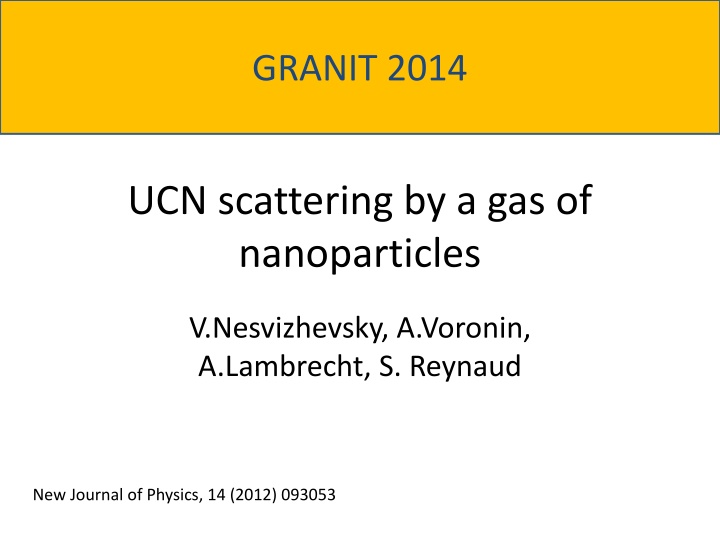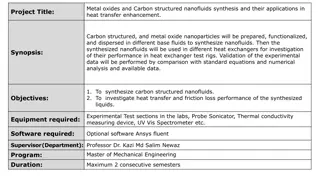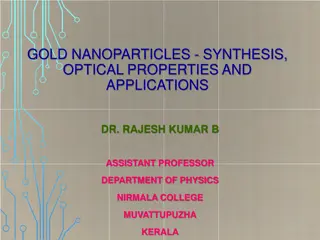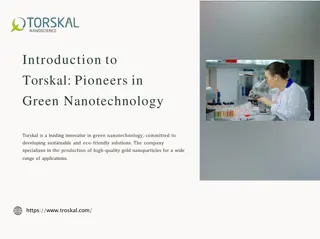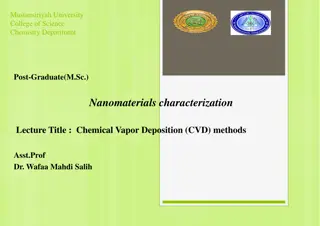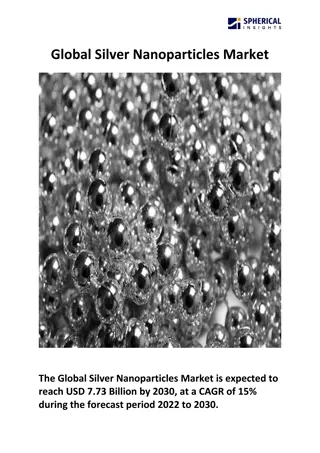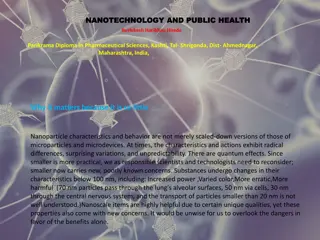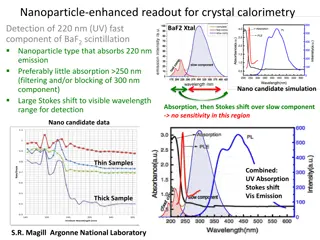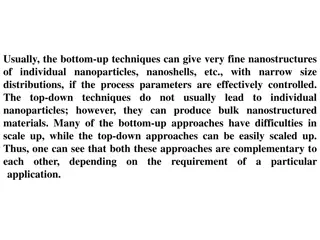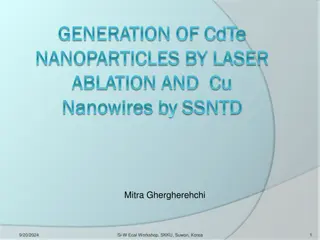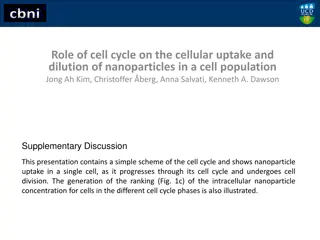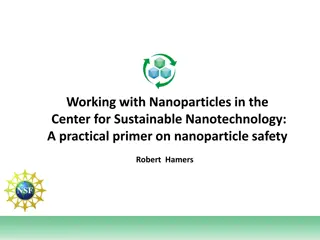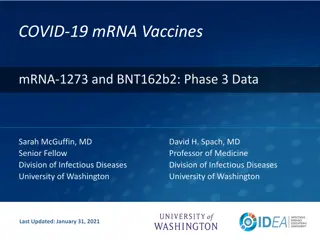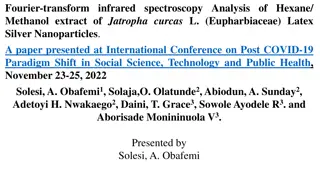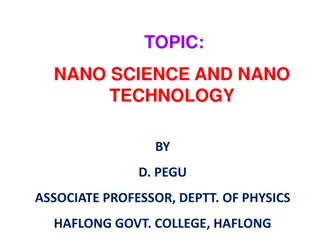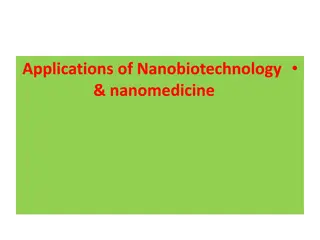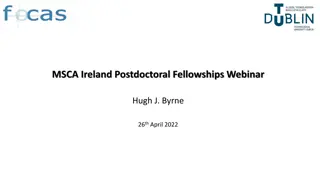nanoparticles
Model nanoparticles in a gas scattered by ultra-cold neutrons with mathematical analysis of energy transfer probabilities. Examines differential and total cross-sections, nanoparticle size, density, and substance impact, and implications for ultra-cold neutron heating. A detailed investigation using Maxwell-Boltzmann distribution to understand the phenomenon.
Download Presentation

Please find below an Image/Link to download the presentation.
The content on the website is provided AS IS for your information and personal use only. It may not be sold, licensed, or shared on other websites without obtaining consent from the author.If you encounter any issues during the download, it is possible that the publisher has removed the file from their server.
You are allowed to download the files provided on this website for personal or commercial use, subject to the condition that they are used lawfully. All files are the property of their respective owners.
The content on the website is provided AS IS for your information and personal use only. It may not be sold, licensed, or shared on other websites without obtaining consent from the author.
E N D
Presentation Transcript
GRANIT 2014 UCN scattering by a gas of nanoparticles V.Nesvizhevsky, A.Voronin, A.Lambrecht, S. Reynaud New Journal of Physics, 14 (2012) 093053
Model Nanoparticles form a gas, bounded to a vessel surface via Casimir-van der Waals forces Nanoparticle gas follows classical statistics (Maxwell-Boltzman distribution) UCN are elastically scattered by individual nanoparticles in c.m. system
Questions What is the probability of energy transfer from nanoparticles to ultra-cold neutrons in lab system (differential and total cross-sections)? How the size, density, substance of nanoparticle enters the problem? Can a model of nanoparticle gas explain the known facts on UCN small heating?
Energy transfer M m 5 = = (cos ' cos ) / 10 ( ' ) E V k k Vk 0 k c.m. neutron momentum 0 d dE = = ( , ', , '| 2 | cos( ') ' dE f d d cm = ( ) f q f cm
Probability of energy transfer detection 3 2 kT = V 3 R
Energy transfer integral count Diamond R=9.8, 9.4, 9.0 nm , nm2 , nm2 0.25 0.25 0.20 0.20 0.15 0.15 0.10 0.10 0.05 0.05 E, cm E, cm 40 60 80 100 120 140 40 60 80 100 120 140
Differential spectrum Steel R=6.6, 6.3, 6.0 nm
First comparison Steel 6.6, 6.3, 6.0 nm
Nanodroplets Fomblin nanodroplets R-10.4, 10, 9.6 nm
To be taken into account Nanoparticle one-dimensional bounding: 1 ( ) N V d dE M kT = ( , ) ( , , ) E 2 2 2 ( ) exp( ) | | E dV t k V E dk MV ' ' 0 0 N N NN 2 kT 2 mk , ' N N n ?? ?=< ? |exp( ?? ?)|? > Corrections to Born amplitude for large R (R>5nm) f f B Multiple scattering Proper? statistics
